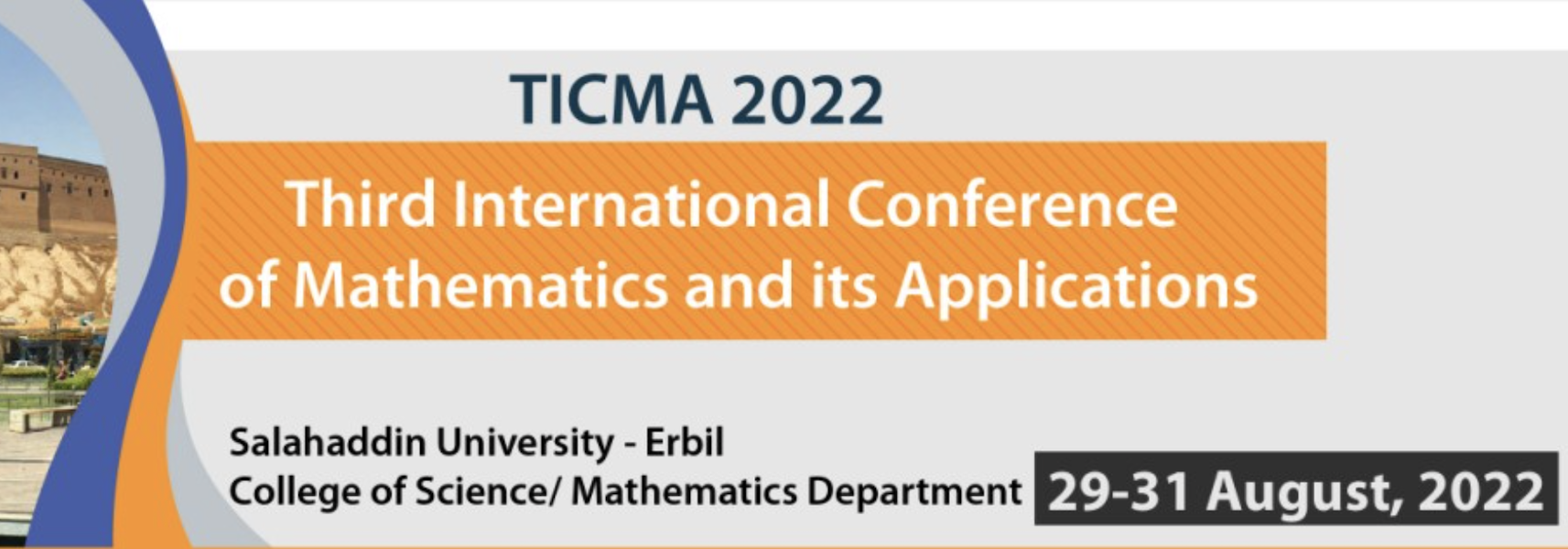
1, a) Rizgar H. Salih and Bashdar M. Mohammed 2, b)
1,2 Department of Mathematics, College of Basic Education,
University of Raparin, Raniyah, Kurdistan Region – Iraq.
DOI: https://doi.org/10.31972/ticma22.11
Abstract
This paper is devoted to studying the stability of the unique equilibrium point and the occurrence of the Hopf bifurcation as well as limit cycles of a three-dimensional chaotic system. We characterize the parameters for which a Hopf equilibrium point takes place at the equilibrium point. In addition, the system has only one equilibrium point which is E_0=(0,0,0). It was proved that E_0 is asymptotically stable and unstable when α<(-13)/7 and α>(-13)/7, respectively. Moreover, for studying the cyclicity of the system, two techniques are used which are dynamics on the center manifold and Liapunov quantities. It was shown that at most two limit cycles can be bifurcated from the origin. All the results presented in this paper have been verified by a program via Maple software.
Key Words: Chaotic System, Hopf Bifurcation Analysis, equilibrium point.

ω_p-Open and ω_p-Closed Functions
Halgwrd Mohammed Darwesh1, a And Shagull Hossein Mahmood2, b
1,2 Department of Mathematics, College of Science, University of Sulaimani,
46001 Sulaimani, Kurdistan Region, Iraq
a) halgwrd.darwesh@univsul.edu.iq
b) shagull.mahmmod@univsul.edu.iq
DOI: https://doi.org/10.31972/ticma22.12
Abstract
In this 𝑤𝑜𝑟𝑘, we study and define two new concepts of functions named and functions by using the concepts of and ϲ𝑙𝑜𝑠𝑒𝑑 sets. The concept of function strictly located between both the concepts of and functions. We obtain a few properties of these functions, however, the connections between them are examined.
Key Words: ω_p-ϲlosed set, ω_p-open set, ω_p-continuous function, ω_p-closed function,ω_p-open function.

Abdulghafoor Jasim. Salim1 Ali A. Asmael2
1,2Department of Mathematics, college of computer science and Mathematics, University of Mosul.
DOI: https://doi.org/10.31972/ticma22.13
Abstract
Key Words: Coding Theory, Projective Space, finite field.

Hajir Hayder Abdullah1,a) and Nada Yassen Kasm Yahya2,b)
1Department of Mathematics, College of Education for Pure Science, University of Mosul, Mosul, Iraq
2Department of Mathematics, College of Education for Pure Science, University of Mosul, Mosul, Iraq
DOI: https://doi.org/10.31972/ticma22.14
Abstract
Key Words: Coding Theory, Projective Space, finite field.

Zhian M. Mahmood1,a) and Nejmaddin A.Sulaiman1,b)
1Department of Mathematics, College of Education, Salahaddin University, Erbil, 44001, Iraq
DOI: https://doi.org/10.31972/ticma22.15
Abstract
In this paper Standard Error of Mean (SEM), as a new technique, is used for transforming multi-objective linear programming problems (MOLPPs) to the single objective linear programming problems (SOLPPs). To this end, an algorithm has been proposed and suggested to solve MOLPPs, which have been tested through numerical examples by employing Excel Solver. However, the study compares the results of other techniques like (Chandra Sen, Optimal Average of Minimax and Maximin, New Arithmetic Average, New Geometric Average, New Harmonic Average, and Advanced Transformation) with the results of this new technique SEM. The numerical results indicate that a new technique in general is promising.
Key Words: Multi-Objective Linear Programming, Geometric Average, Harmonic Average.

1) Department of Mathematics, College of Science, University of Sulaimani, Sulaymaniyah 46001, Iraq.
2) Department of Mathematics, College of Education, University of Garmian, Kalar 46021, Iraq.
a) pishtiwan.sabir@univsul.edu.iq
DOI: https://doi.org/10.31972/ticma22.16
Abstract
This paper investigates the study of -complex fuzzy sets. The -complex fuzzy set, where is a completely distributive lattice, is a generalization of the complex fuzzy set. The fundamental set theoretic operations on -complex fuzzy sets are discussed properly, including -complex fuzzy complement, union and intersection. New procedures are presented to combine the novel concepts of -complex fuzzy -norms and -conorms and look into the conditions that lead to a comparable representation theorem. We have used the axiomatic method, in the sense that our underlying assumptions, especially about, are abstract; it can thus be ascertained to what extent our results apply to some new problem. On the other hand, our method shows that if mathematics, as we use it, is consistent, so is fuzziness, as we formulate it.
Key Words: : Fuzzy set; Complex fuzzy set; -complex fuzzy set; Fuzzy -norm; Fuzzy -conorm.
